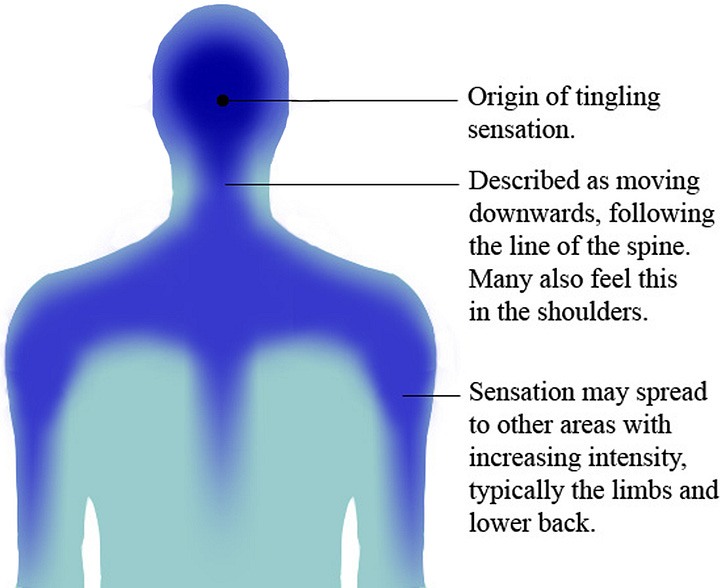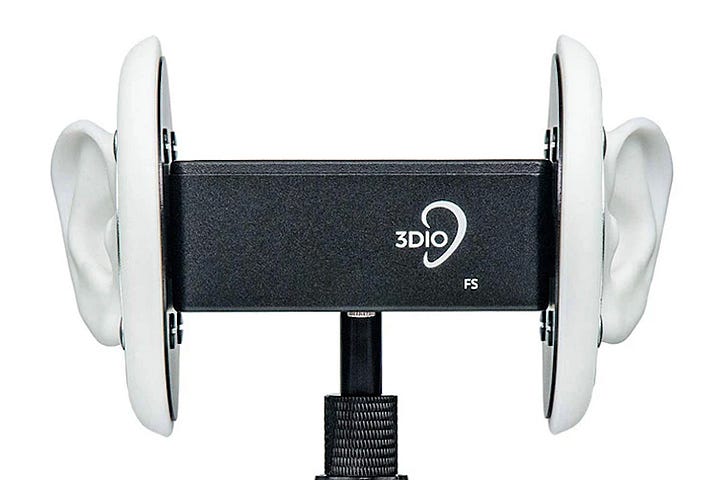ASMR
ASMR is a curious blend of internet culture, neuroscience and performance art.
ASMR, short for Autonomous Sensory Meridian Response, refers to the tingling, static-like sensation some people experience in response to specific audio-visual triggers. The feeling usually starts at the scalp and travels down the neck and spine, often accompanied by a deep sense of calm or even euphoria. Though the experience has existed for generations (the writer Virginia Woolf described it in her 1925 Mrs Dalloway), it didn’t have a name, or trigger much public discussion until the internet brought like-minded people together.


In 2007, users on a health forum began describing this odd, relaxing sensation they got from sounds like whispering, tapping or brushing. It went by various informal names: “head tingles”, “brain orgasms” or simply “that feeling”. It wasn’t until 2010 that Jennifer Allen coined the term “Autonomous Sensory Meridian Response”, hoping to give the phenomenon a more clinical, non-sexual and legitimate label. She also started the first ASMR Facebook group, which became a magnet for others who had experienced the same mysterious effect but never had the words for it.
The real explosion of ASMR was facilitated by YouTube. By the early 2010s, a wave of videos surfaced featuring people whispering gently, tapping fingernails on hard surfaces, roleplaying as librarians or optometrists, and simulating close personal attention. “Gentle Whispering ASMR” (aka Maria Viktorovna) became one of the earliest ASMR celebrities, followed by “ASMR Darling” and “Gibi ASMR”, each of whom brought a slightly different aesthetic – wholesome, quirky or cosplay-inspired – to the scene. ASMR quickly moved from niche curiosity to full-blown internet subculture, with millions of viewers around the world and new creators emerging every day.
Scientific research eventually began to catch up, particularly between 2015 and 2018. Studies confirmed that ASMR is a genuine, measurable response for those who experience it. Functional MRI scans suggested that ASMR activates brain regions associated with social bonding, calm and reward. Participants who felt ASMR reported lower heart rates, reduced stress, and elevated mood. Still, it remains a somewhat exclusive club – only around 20–30% of people seem to experience true ASMR tingles.


Several famous and quirky examples have helped ASMR seep into broader cultural awareness. The painter Bob Ross, host of YouTube’s “The Joy of Painting”, is considered a grandfather of ASMR; his soft voice, brush sounds and warm demeanour produce what’s now termed “accidental ASMR”. Unintentional ASMR also shows up in unexpected places. Narrators like David Attenborough or Morgan Freeman have long been cited as trigger-inducing without even trying. The trend has even caught the attention of brands. IKEA, the beer brand Michelob Ultra and KFC have all produced ASMR-style commercials. Michelob example below – along with a video where Australian actor Margot Robbie gets to do some whispering in an ASMR interview for W Magazine.
ASMR has expanded beyond YouTube, with Spotify playlists of gentle sounds, Twitch streamers performing live ASMR sessions and wellness apps offering ASMR soundscapes for sleep and relaxation. High-end equipment like the 3Dio binaural microphone – shaped like a pair of human ears – has become standard fare for professional “ASMRtists”.
Videos
REMORANDOM Book Chapter




